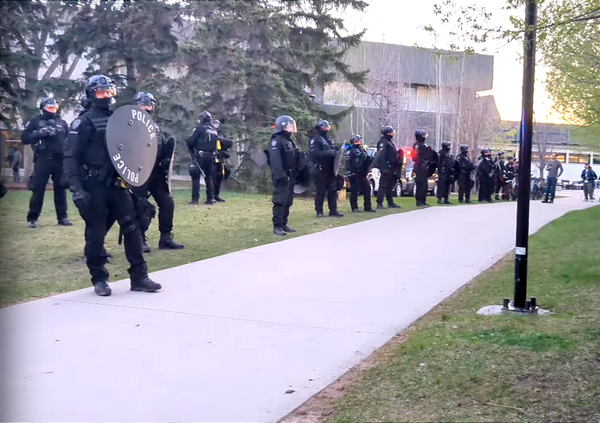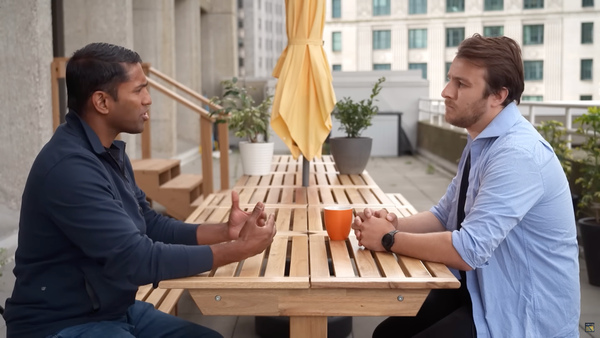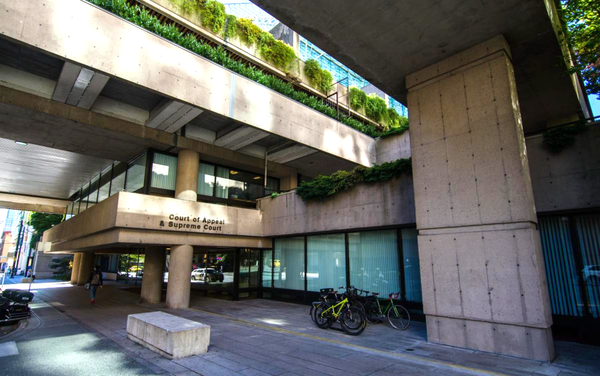Part 2 - How Calgary Police leadership cheated the census
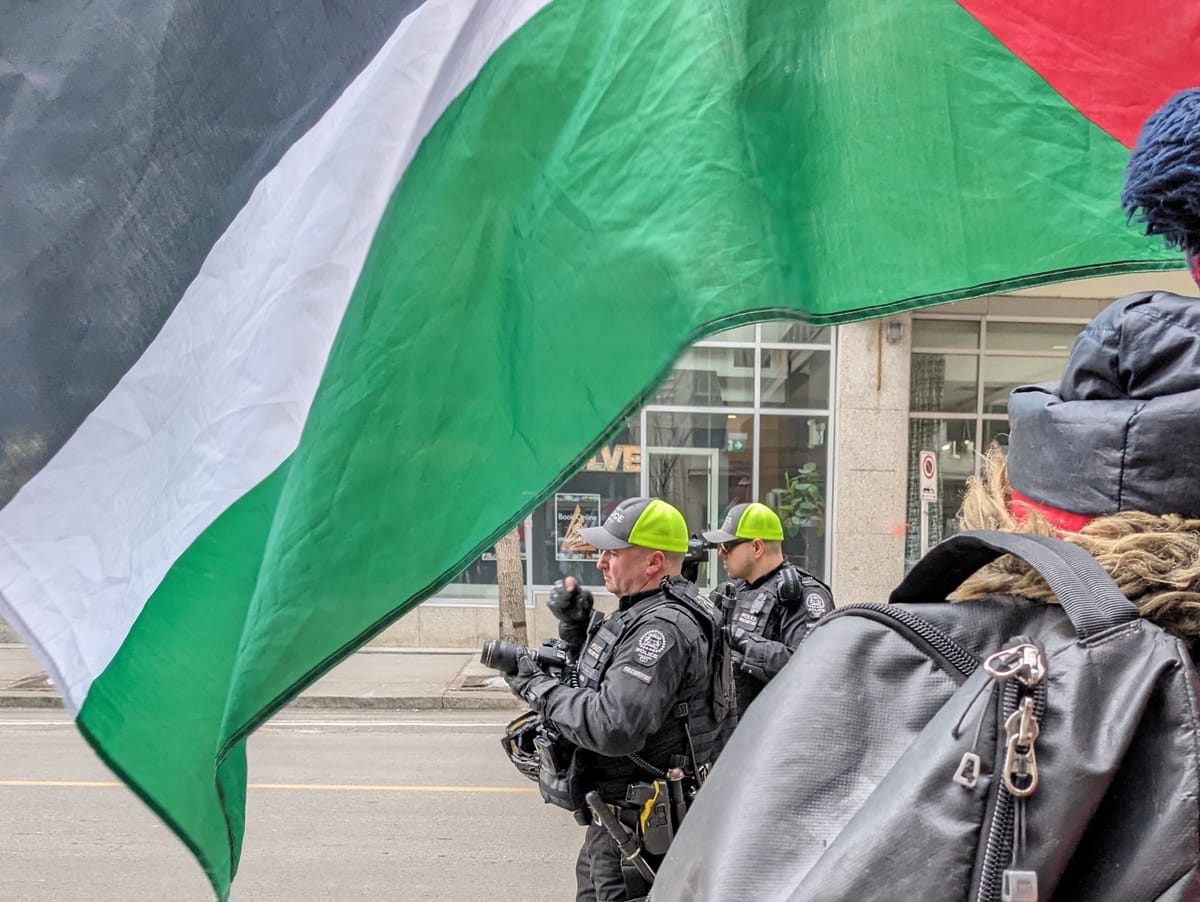
Hidden census data from the the Office of the Chief at Calgary Police reveal it is dominated by non-racialized outside hires with different backgrounds and worldviews than the officers they lead, who are offered more flexibility to work from home and more overtime pay than most of their colleagues.
ℹ Last month, we shared the results of the 2022 CPS Workplace Census. Over the coming weeks, we will be sharing more information about the people who make up the Service & how we reflect our community.
— Calgary Police (@CalgaryPolice) July 14, 2023
Through our Census, we learned that the CPS workforce is quite young, with… pic.twitter.com/HH9P9HDGOz
Systemic racism, 'security' practices in dense environments and urban land seizures by commercial interests are all at the forefront of how police operate in modern-day Canadian cities, so understanding their population demographics is critical – particularly the leadership.
Calgary Police Service (CPS) launched a Workplace Census in 2017, which provides one mechanism by which we can evaluate the power structures at work in the complex environment of public safety. In 2022, CPS repeated the census, quietly releasing the data around Stampede. Two CPS Twitter posts were made about the census on July 14 and August 4, 2023. Calgary Police Commission and Chief Mark Neufeld made no public mention of the census, and local media ignored it.
Through a freedom of information request, Drug Data Decoded obtained the Sworn Officer and Civilian Staff response spreadsheets, and both are made available here in full. Readers are encouraged to explore the data further, as there are no doubt many more discoveries to be made within.
Part 1 of this 3-part series showed how the Office of the Chief appears to have doctored the survey results to hide its 2022 Workplace Census responses. Despite this apparent sleight of hand by the executive leadership, Part 1 showed the method used to extract Office of the Chief response data.
Part 2 takes a closer look at those data, comparing the responses with those from four other bureaus.
Is the Office of the Chief hiding something?
This analysis will include only the Sworn Officer data unless otherwise noted, to reflect primary power structures in Calgary Police such as its monopoly on legalized violence. The five bureaus that will be compared are the Office of the Chief, Community Policing, Investigative Support, Service & Community Support and People & Organizational Development.
The comparisons that follow generally avoid survey questions with little relevance to policing, with the exception of religious affiliation. The question of religious neutrality at Calgary Police Service has been under the microscope in recent years, with signs pointing to evangelical Christian bias among decision-makers.
Religion, race and ethnicity
- In a surprise twist, the Office of the Chief shows the highest percentage of atheist respondents at 21% and the lowest percentage of Christian respondents at 34%, among the five bureaus.
- The Office of the Chief shows the second-lowest proportion of racialized officers at just 10% (Investigative Support has 7%); however, around 10% of "racialized" responses are specified as "Caucasian (unspecified)" and "Western European (e.g. Italian, Greek, German, French, Portuguese, etc.)." This will be discussed further in Part 3.
- In the Workplace Census report, the Office of the Chief claims 15% of its members are racialized. Even including the 54 Civilian respondents from the Office of the Chief, this is a false claim. Including officers and civilians together, the Office of the Chief comprises 13% racialized members.

- Respondents from the Office of the Chief also appear to be the only group with Canadian pride: 31% include "Canadian" as part of their ethnicity, while only 11-16% of respondents in the other four bureaus answered similarly.
- Zero respondents with Indigenous heritage responded from the Office of the Chief, while the Office of the Chief outpaces all other bureaus in Scottish, Irish, German and Italian heritage.
Work conditions and overtime
- When asked how many paid hours they spend actually working in a typical week, one respondent (3.4%) in the Office of the Chief indicate they work zero hours despite being paid full-time, while others respond that they work 60 or even 80 hours a week.
- Over a third of officers in the Office of the Chief and the bureau of People and Organizational Development claim to work 10 or more unpaid hours per week (most between 10 and 24 unpaid hours, with some people across bureaus claiming 40 to 56 unpaid hours per week).
- When asked "How many hours of paid overtime do you work in an average week?" one respondent (3.6%) in the Office of the Chief stated more than 20 hours, alongside another 13 respondents (1.1%) claiming similar across other bureaus.
- The mean across departments ranges from 1.4 to 2.9 hours overtime a week, with the Office of the Chief in second at 2.6 hours, behind Community Policing at 2.9 hours.
- 2,150 officers working an average of 2 hours overtime per week at $50/hour base wage is equal to nearly $17 million annually, over 3% of the budget.
- Civilian staff claim roughly half of the paid overtime that officers claim.
- Outpacing other bureaus, 31% of officers in the Office of the Chief cite working from home when asked "Where do you conduct your work?" Combined with "Hybrid / Split between home and office," 34.4% of officers in the Office of the Chief work from home, versus 27.4% in the next-highest bureau, People & Organizational Development.

- 21% of officers in the Office of the Chief responded they had taken leave, compared with 28 to 57% across the other four bureaus (Service & Community Support led at 57%). The low rate of leave in the Office of the Chief likely reflects the fact that most are relative newcomers to the force.
- Disciplinary measures were not included as a category for leave of absence in this census.
Highly placed rookies
- Over a fifth of respondents from the Office of the Chief moved to Calgary in the last five years, while other bureaus ranged from 2.4 to 11.7% in this category. This implies a high rate of external hiring at the Office of the Chief.
- Confirming this hypothesis, over a third of respondents from the Office of the Chief were hired in the last two years. The bulk of officers in other bureaus have been in the force for 15 to 25 years.
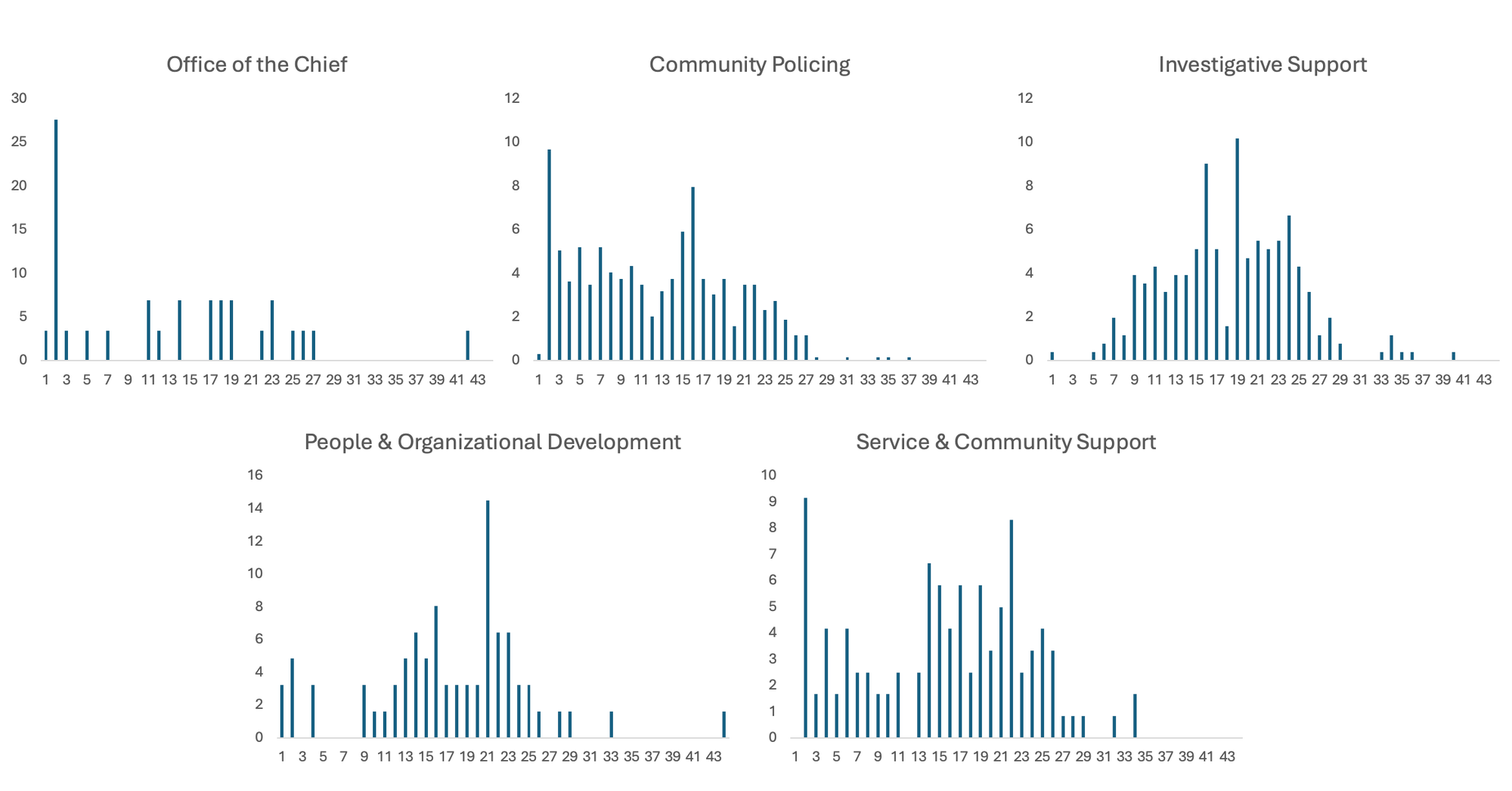
- Asked which division they work in, half of respondents from the Office of the Chief responded "Legal and Regulatory Services," while over 40% responded "Not Applicable." The Executive Officer Division comprises the remaining 10%.
- Among Civilian respondents, 15 (about 2.7%) indicate they are in Strategic Communications, which operates from the Office of the Chief. Among other tasks, this group monitors citizens by circulating daily news clippings to the chief and executive team. A separate freedom of information request revealed 335 pages of such monitoring of Drug Data Decoded author Euan Thomson between 2022 and 2023.

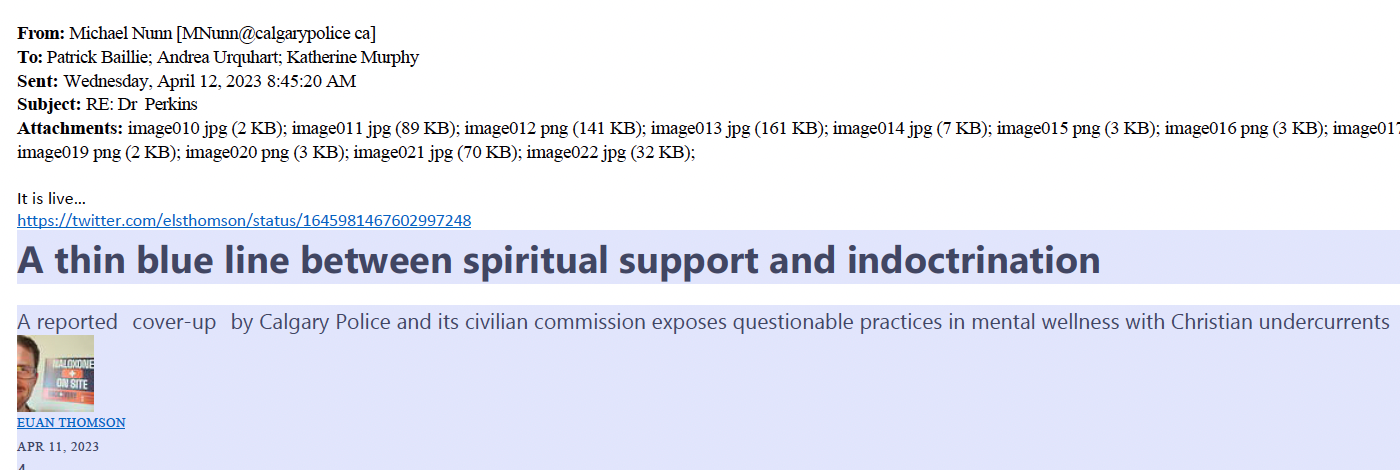
Education and work experience
- Behind Community Policing, the Office of the Chief has the second-highest proportion of respondents with high school-only education. Evidence suggests higher education is linked to lower rate of police violence among community-level police, though it's unclear how this might manifest in leadership.
- The Office of the Chief is most highly represented by people with a background in government, perhaps reflecting the political nature of policing at the leadership level. More than 27% of the Office is ex-government, while other bureaus range from 16 to 23%.
- All other bureaus have 10% or more respondents who served in the armed forces. The Office of the Chief is the only bureau with no former members of the armed forces among its respondents.
Fortress of the Chief
This analysis reveals several ways in which the Office of the Chief may be creating a fortress mentality within Calgary Police Service. Higher ranks aside, the Office of the Chief is dominated by non-racialized outside hires with different backgrounds and worldviews than the officers they lead, are offered more flexibility to work from home, and are able to claim more overtime pay than most of their peers.
While the Workplace Census report claims a big improvement in Indigenous representation, this trend has yet to appear among leadership: zero respondents from the Office of the Chief identify as Indigenous.

Part 3 will evaluate the credibility of claims made by CPS leadership through its census report and demonstrate the demographic misalignment between CPS and Calgary as a whole. If "police are the public and the public are the police," we seem to have a long way to go. Don't miss it – subscribe below!
Drug Data Decoded provides analysis on topics concerning the war on drugs using news sources, publicly available data sets and freedom of information submissions, from which the author draws reasonable opinions. The author is not a journalist.



